
Introduction
Errors in Image Intensity
- How images change when smoothed
- Café Wall Illusion
- Spring Pattern
- Waves Pattern
Café Wall Illusion
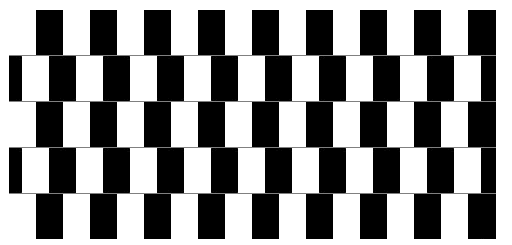
Figure 1
The café wall illusion consists of a black and white checkerboard pattern with alternating rows shifted one half of a block and with thin gray mortar lines separating the rows. The pattern creates the illusion of the horizontal mortar lines being tilted. The effects of smoothing on the pattern can explain this illusion.
If we take a closer look at the pattern, we find that the horizontal gray lines create two different types of edges because of their proximity to the black and white blocks. There are gray lines between white and black solid areas (type 3 edges) and there are gray lines between two black areas or gray lines between two white areas (type 2 edges).
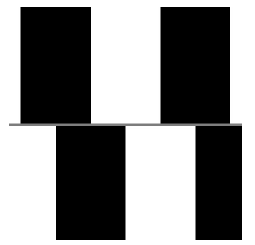
Figure 2
If we smooth the image and then apply edge detection, we obtain edges as shown below.
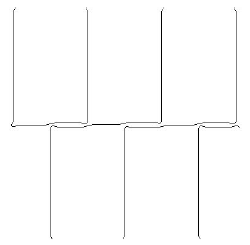
Figure 3
As you can see, the smoothing distorts the edges to bulge where the horizontal mortar line is between two areas of the same gray value and to come closer together otherwise. A local edge detector produces small edge segments, which are tilted in the same direction as perceived. These edge elements are then linked by more advanced computational processes into lines of longer extent. Assuming that these processes are computationally approximations using as input the position and the orientation of the short edge elements, they will derive tilted mortar lines.
Based on the understanding of how the illusion works we should be able to counteract the effect by introducing new elements into the picture that balance out the illusion. We do this by inserting white and black squares into the corners of the tiles. As you can see, this greatly reduces the illusion.
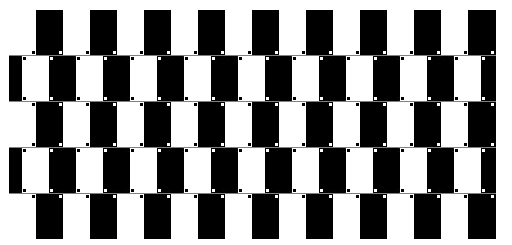
Figure 4
If we zoom in and look at the edges we notice that the added squares compensate for the drifting of the lines. There is still “waviness” to the edges, but it is too weak to be perceived.
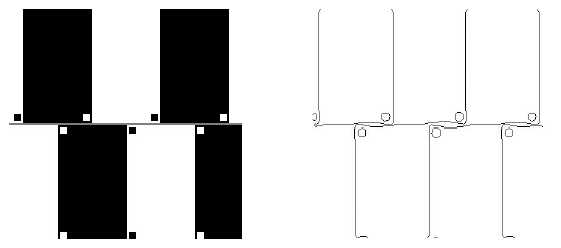
Figure 5